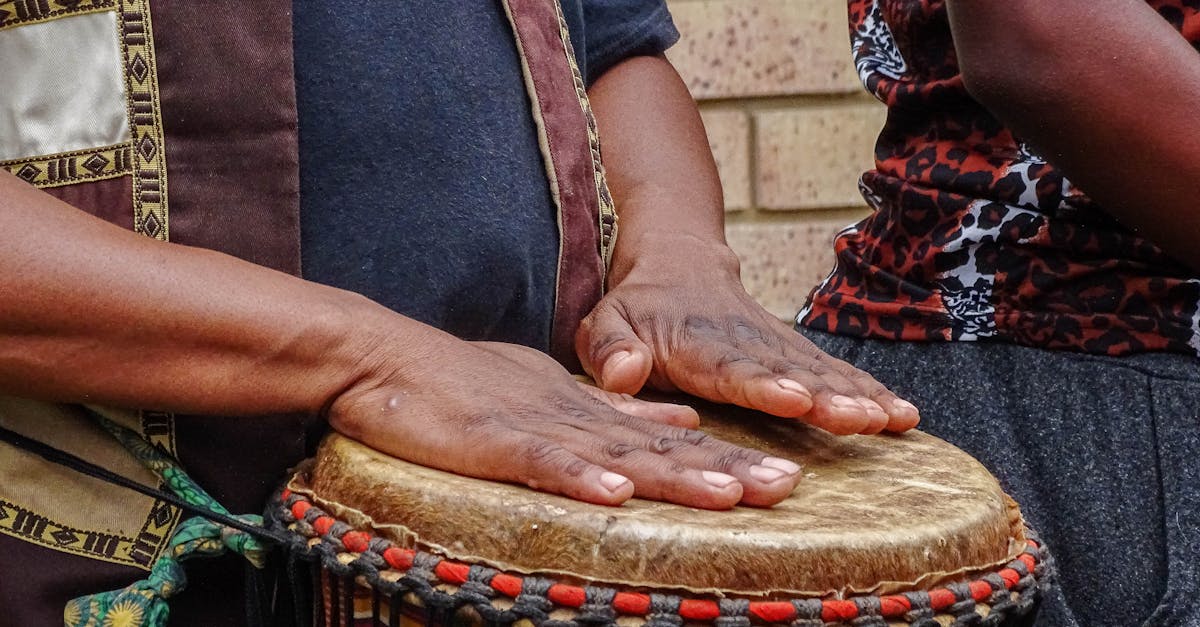Galactic Grooves Journeys Through World Music Rhythms
Introduction
Music transcends borders, cultures, and languages, providing a universal language that connects us all. Among the various facets of music, rhythm stands out as a fundamental element that defines how a piece moves and grooves. "Galactic Grooves" delves into the diverse world of music rhythms, examining their origins, significance, and global influences. From the mesmerizing beats of African drums to the infectious syncopations of Latin music, different cultures contribute unique rhythmic patterns that enrich global soundscapes. This article takes you on a rhythmic journey, exploring how world music rhythms shape today's musical tapestry. Discover how the beat of a drum or the pluck of a string can narrate histories and emotions across continents.
Advertisement
The Pulse of Africa
Africa, often hailed as the cradle of rhythmic innovation, boasts a profound legacy of musical rhythms that have inspired generations worldwide. The continent's rich tapestry of sounds is evident in its booming djembes, balafons, and talking drums. West African rhythms like Afrobeat and Highlife have transcended their roots, influencing global genres such as jazz, funk, and pop. The polyrhythmic patterns prevalent in African music often feature complex interlocking parts, challenging musicians' dexterity while captivating listeners. These beats not only serve as a foundation for storytelling and ceremony but also express the heartbeat of communities. Africa's rhythms continue to inspire modern music trends, uniting traditional sounds with contemporary influences.
Advertisement
Latin America's Vibrant Cadences
Latin America's music is a vibrant tapestry woven with emotions, history, and dance. Whether it's the samba of Brazil, the salsa of Cuba, or the tango of Argentina, Latin rhythms are a celebration of life. Emerging from a fusion of Indigenous, African, and European influences, these rhythms pulse with energy and passion. Elements like syncopation and cross-rhythms create an irresistible drive that compels movement and dance. Artists worldwide have embraced these infectious cadences, leading to collaborations and the introduction of genre hybrids like reggaeton and Latin jazz. Latin America’s rich rhythmic diversity makes it a cornerstone of world music, offering endless possibilities for innovation and creativity.
Advertisement
The Resonance of Asia
Asia’s rich musical traditions feature rhythms that echo with cultural and spiritual significance. From the intricate tala patterns of Indian classical music to the swift beats of Japanese taiko drums, Asia offers a vast spectrum of rhythmic styles. In India, rhythms are not just musical elements, but they also symbolize deeper spiritual meanings, often aligning with rituals and ceremonies. The gamelan orchestras of Indonesia showcase interlocking metallophones and dynamic tempo changes, creating a mesmerizing auditory experience. This region’s rhythmic influences extend far and wide, inspiring a variety of mediums, from film scores to fusion music, continuously captivating and enriching global listeners.
Advertisement
The Heart of the Caribbean
The Caribbean, blending African, European, and Indigenous influences, has birthed unique and compelling musical rhythms. Reggae, calypso, and soca reflect the islands’ vibrant culture and history, with syncopated beats that prompt audiences to sway and groove. Reggae, with its iconic offbeat rhythm, not only stands as a musical genre but also as a voice of social change and identity. Steelpan, originating from Trinidad and Tobago, represents innovation born of cultural synergy and resourcefulness. The infectious energy and rich stories embedded in Caribbean rhythms have made them a staple in the global music scene, influencing countless artists and genres across the world.
Advertisement
European Influences and Interconnections
Europe, traditionally known for its classical roots, carries rhythms that have significantly influenced modern music. From the waltzes in Vienna to the flamenco in Spain, European rhythms encompass elegance, passion, and vibrancy. The diverse cultural interactions within Europe have led to a seamless blend of regional sounds—Celtic folk often merges with French chanson or the Nordic sagas. European rhythms laid the groundwork for Western music theory and notation, facilitating the spread of rhythm to other continents. Today, Europe's rhythmic contributions are seen in various genres, from electronic dance music to indie pop, demonstrating a rich legacy that continues to evolve and influence globally.
Advertisement
Middle Eastern Rhythms and Their Rich Heritage
Middle Eastern music is unmistakably distinct with its maqam-based tonality and intricate rhythmic cycles known as "iqaat." Instruments like the darbuka and oud create hypnotic patterns that often accompany dance, poetry, and traditional storytelling. This region's rhythms are integral to cultural expression, rituals, and celebrations, conveying deep emotions and communal connections. As globalization intertwines cultures, Middle Eastern rhythms have found roots in genres such as electronic music and fusion projects. Their ability to evoke deep emotional responses and intrigue international audiences has made them a vital part of the global music dialogue, showcasing the region's profound cultural heritage.
Advertisement
Indigenous Roots and Rhythms
Indigenous communities worldwide offer rhythms rooted in the land, nature, and ancestral heritage. Their music reflects unique storytelling forms, used to preserve history, communicate with the divine, or mark social events. In North America, Native American drum circles symbolize unity and tradition. Aboriginal music in Australia, often manifested through didgeridoo rhythms, conveys connection to the earth and community. Indigenous rhythms, once endangered, have seen a resurgence, with efforts to preserve these precious cultural expressions. Collaborations with modern artists continue to inspire new rhythms and styles while ensuring these ancient beats are woven into contemporary global soundscapes.
Advertisement
Modern Fusion and Globalization
The globalization of music has sparked a fusion of rhythms, blending diverse traditions into innovative new sounds. World music enthusiasts and musicians alike are increasingly experimental, integrating elements from various cultural rhythms into a unified global beat. Globalization has led to collaborations between artists from different backgrounds, resulting in hybrid genres like Afrobeat-influenced pop, Latin-infused jazz, or Indian-inspired reggae. Technologies and platforms like YouTube and Spotify showcase this global rhythmic symphony, allowing even remote rhythms to reach broad audiences. This fusion not only celebrates diversity but also pushes the boundaries of creativity and innovation in modern music.
Advertisement
Conclusion
The world’s rhythmic diversity offers a rich palette of sounds that inspire, energize, and connect us as global citizens. Whether it's the ancestral drumbeats of Africa or the contemporary fusion trends, each rhythm narrates a story, echoing the cultural tapestry it stems from. Appreciating these rhythms allows us to better understand the world and the diverse peoples within it. As we continue to explore and integrate these rhythmic patterns, the global soundscape becomes richer, more inclusive, and ever-evolving. Galactic Grooves, a journey through world music rhythms, reminds us of the universal language of music and its power to unify and celebrate humanity.
Advertisement







